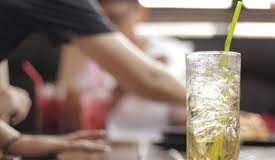Baijiu Group of Chinese Liquors
Also known as Shaojiu, Baijiu is a Chinese alcoholic drink which is made from grain. Baijiu literally means clear alcohol or liquor and is a strong distilled spirit which generally contains 52 percent alcohol by volume. Baijiu is usually distilled from fermented sorghum, though some other grains like millet, barley, wheat and glutinous rice may also be used at times.
Baijiu appears similar to several other East Asian liquors apart from the difference that alcohol content is significantly higher than others. Baijiu in fact, is closer to Vodka in mouth-feel and strength. With 5 billion liters sold in 2016, Baijiu is the most widely consumed type of alcohol in the entire world.
Grouping Baijiu
Baijiu is primarily grouped by its fragrance. Distinctive taste and smell of Baijiu is highly valued in Chinese culinary culture. Connoisseurs of Baijiu especially focus on its fragrance. Some of the most popular fragrance categories of Baijiu include Sauce, Strong, Light, Rice, Phoenix, and Rice fragrance.
Basic Unflavored Types of Baijiu
Some of the basic unflavored types of Baijiu are enumerated below.
- Yanghe Daqu – Following millennia of traditional craftsmanship, Yanghe Daqu utilizes only highest quality of sorghum as base and the best barley wheat and peas as high-temperature fermenting agents.
- Fenjiu – This liquor dates back to AD 550 and is the original Chinese sorghum baijiu with 63 to 65 percent alcohol by volume.
- Erguotou – Clear & strong distilled liquor, Erguotou is often inexpensive and therefore particularly popular among workers across northern and north-eastern China.
- Luzhou Laojiou – This Baijiu is famed for quality of distillation and its unique mouth-feel & aroma which is due to the unique clay used while brewing that infuses taste.
- Daquijiu – With 300 years of history, Daqujiu is made from wheat & sorghum which are fermented for a long time. Alcohol content in Daqujiu is 52 percent by volume.
- Wuliangye – Made up of five grains, wheat, corn, glutinous rice, rice & sorghum, Wuliangye is strong & aged distilled liquor produced in city of Yibin and uses water from the middle of Min River for brewing.
- Jiugui or Sot – This is clear distilled liquor which is made from wheat, sorghum, glutinous rice and spring water. Alcohol content by volume in Jiugui ranges between 38 to 54 percent.
- Gujinggongjiu – Gujinggongjiu is traditional Chinese liquor which is made of water from a well in Bozhou in Anhui province. Alcohol content in Gujinggongjiu ranges between 38 to 50 percent by volume.
Flavored Baijiu
Some of the most common types of flavored Baijiu are enumerated below.
- Mei Kuei Lu Chiew – This is a rose essence variety of Kaoliang wine which is distilled with a species of rose and sugar crystals. Alcohol content in Mei Kuei Ly Chiew is between 54 to 55 percent by volume.
- Moutai – Coming from Maotai in Guizhou, this liquor has a production history of over 200 years. Made from sorghum and wheat, unique distillation process of Moutai involves seven iterations of brewing cycle.
- Guotai – Guotai has a crisp and clear flavor which is perfect for all occasions. Made from wheat and special lush red sorghum, Guotai is the highest quality brand of Baijiu which uses an ancient Chinese process for distillation.
- Wu Chia Pi Chiew – Pronounced Wujiapijiu, this is a variety of Kaoliang wine which is additionally mixed with Chinese herbal medicine like Angelica sinensis to the brew. Alcohol content in Wu Chia Pi Chiew is between 54 to 55 percent by volume.
- Yuk Bing Siu Zau – This is Cantonese rice liquor which is made from steamed rice. However, pork fat is stored with liquor after distillation and removed just before bottling. Alcohol content in Yuk Bing Siu Zau is 30 percent by volume.
- Sanhuajiu – With over 1000 years of history, Sanhuajiu is rice liquor which is made in Guilin. Famous for fragrant herbal additions and use of spring water from Mount Xiang region, alcohol content in Sanhuajiu is between 55 to 57 percent by volume.
- Chu Yeh Ching – Fenjiu brewed with a number of other selected Chinese herbal medicines, Chu Yeh Ching is sweet bamboo-leaf green liquor produced in Shanxi. Alcohol content in Chu yeh Ching ranges between 38 to 46 percent by volume.
- To Mei Chiew – This is another variety of Cantonese liquor which is produced in Xiaolan near Zhongshan in Guangdong. To Mei Chiew is made from rice wine with addition of mei flowers and crystal sugar syrup. Aged for over a year, alcohol content in To Mei Chiew is about 30 percent by volume.
- Pi Lu Chiew – Infused with Chinese herbal medicines and sugar, Pi Lu Chiew is jade-green in color. Pi Lu Chiew comes from Wuhan, the sprawling capital of Hubei province in Central China.
- Chajiu – Chajiu consists of Kaoliang wine flavored with hawthorn berries and tea leaves. Light reddish brown in color, Chajiu is produced by several manufaturers in Sichuan province. Alcohol content in Chajiu ranges between 8 to 28 percent by volume.
Serving Baijiu
Baijiu is traditionally served either warm or at room temperature and consumed in shot glasses, like Vodka. It is common practice to drink Baijiu with food rather than alone. Baijiu is characterized by a double semi-solid state fermentation which uses fungi as microbial starter for saccharification which is typical of liquors produced in Far Eastern countries.
While low-grades of Baijiu can be quite inexpensive, higher grades which are often aged for several years command good prices.






